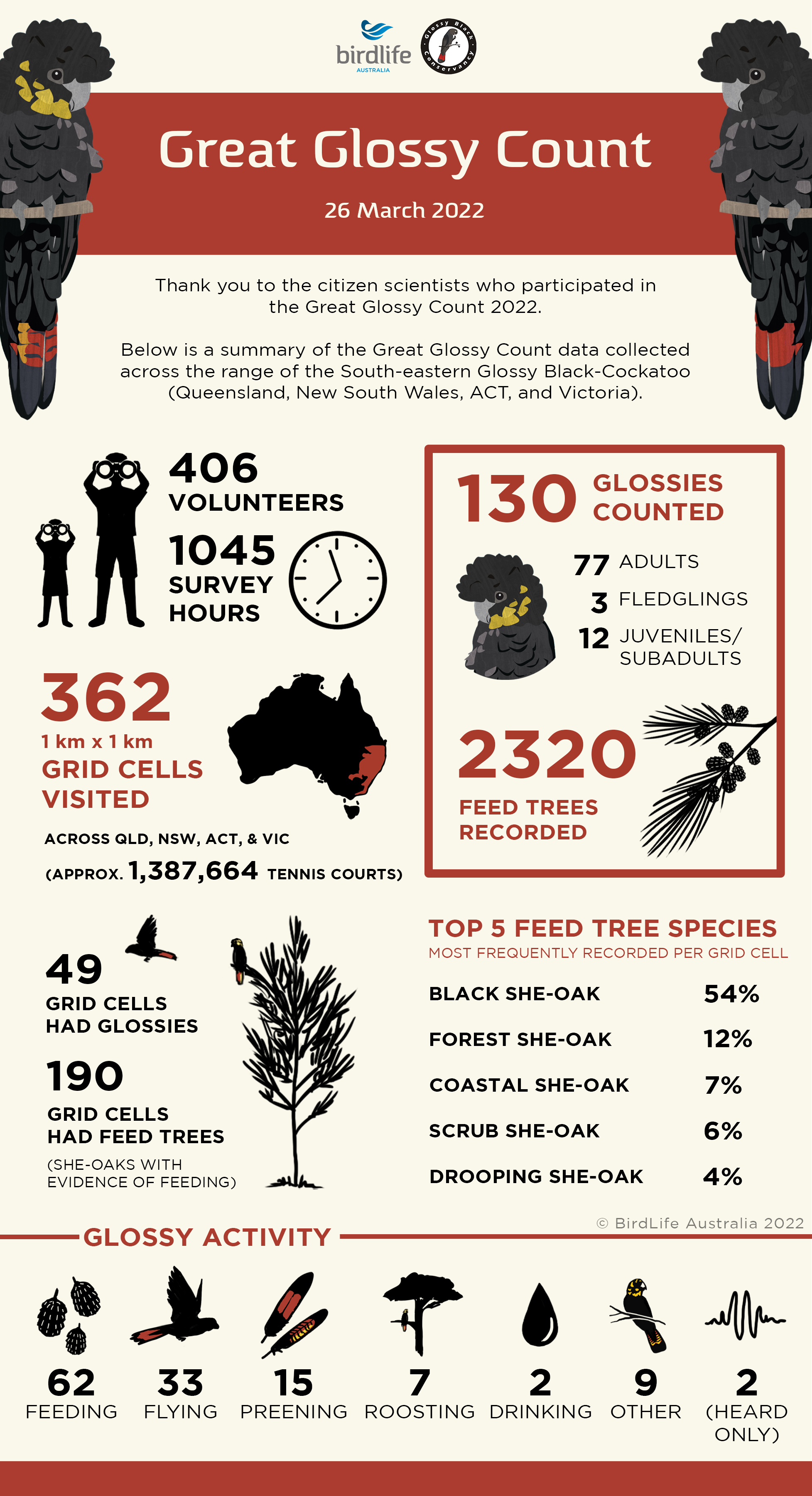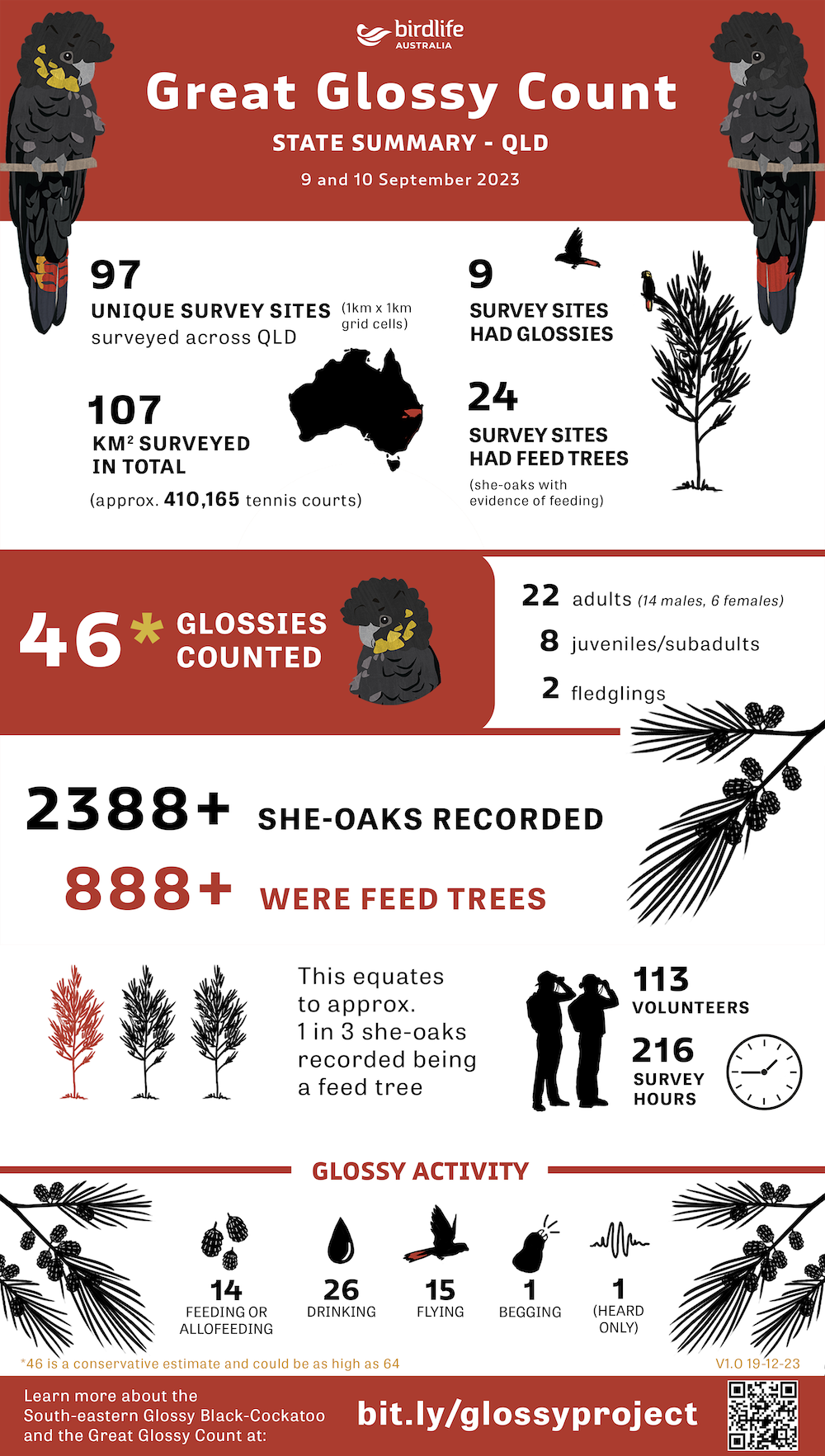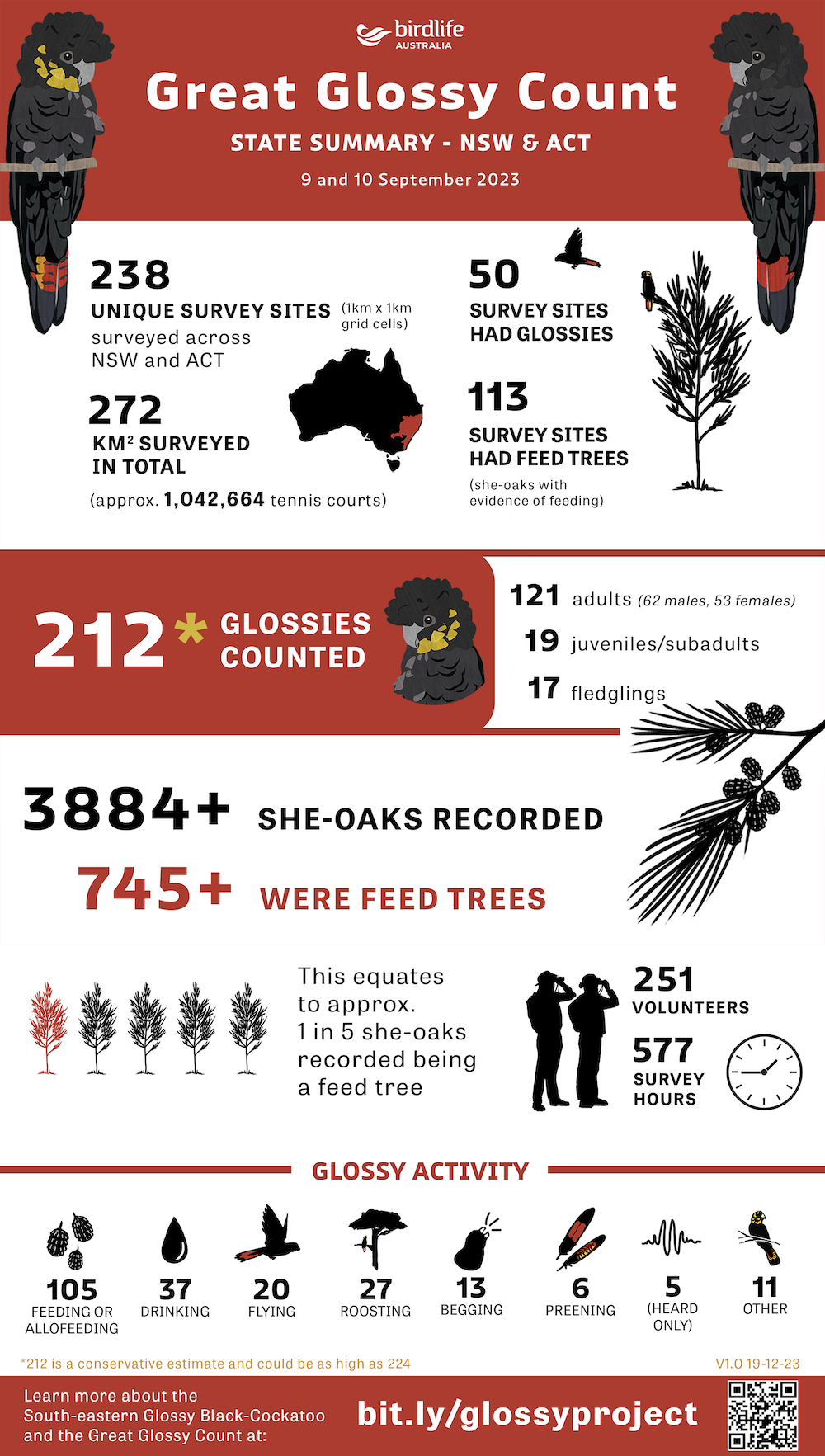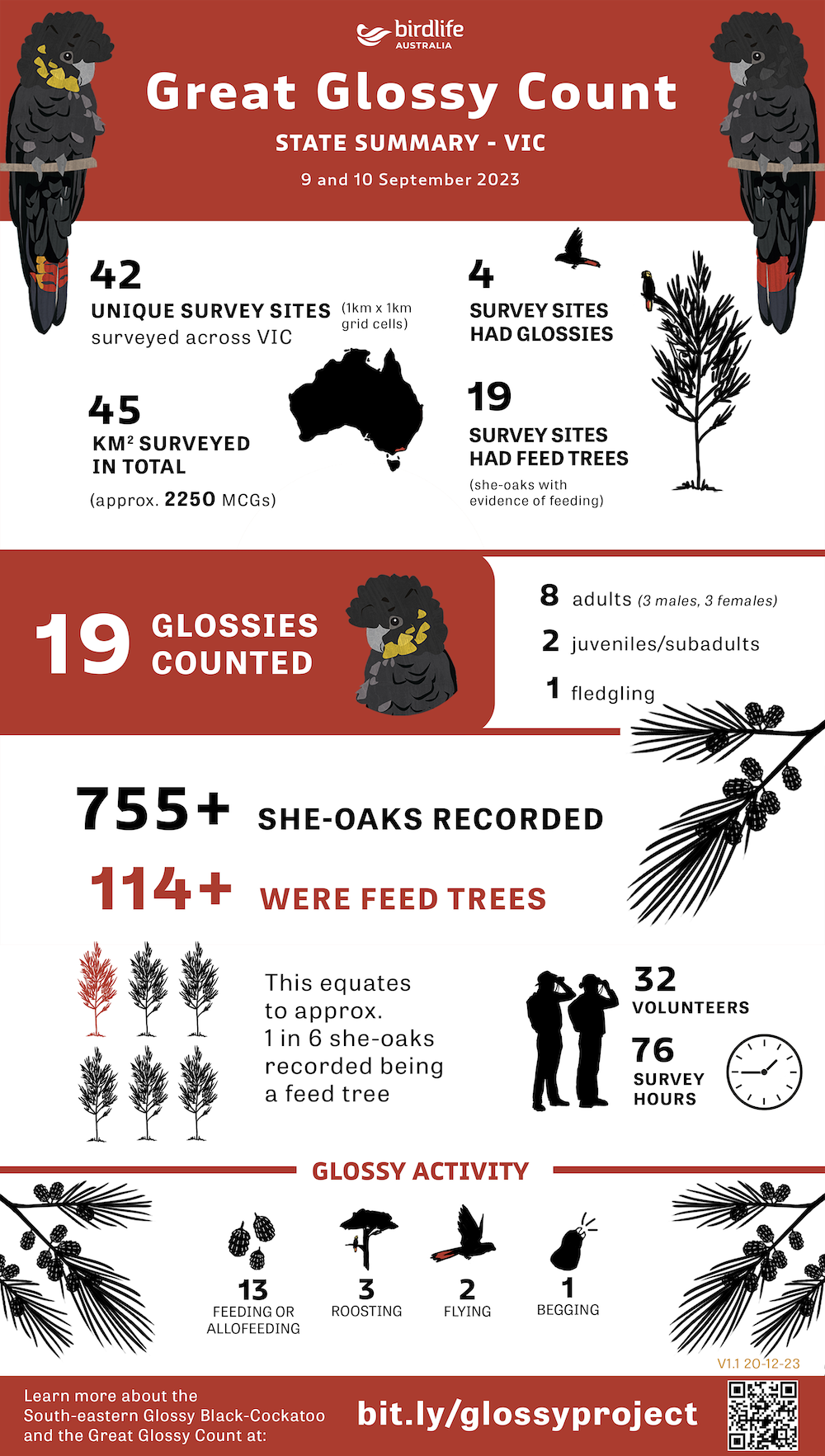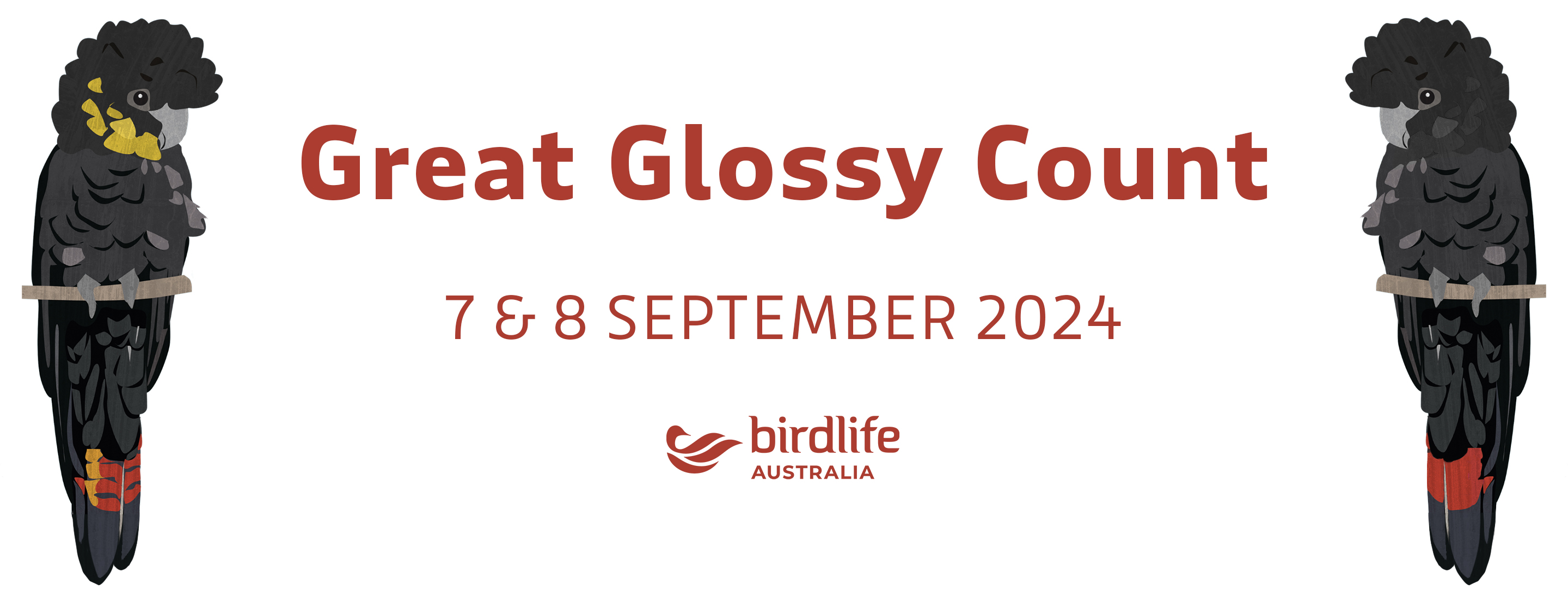
The Great Glossy Count 2023 has now concluded.
The next Great Glossy Count will be held on 7 & 8 September 2024.
We are pleased to share a summary infographic from the Great Glossy Count 2023 with you, illustrating the results of this important National survey.
Our sincere thanks to everyone who took part and supported this event. This data would not have been possible without the incredible contribution by our volunteer citizen scientists, and will help to inform bushfire recovery and conservation management actions for South-eastern Glossy Black-Cockatoos.
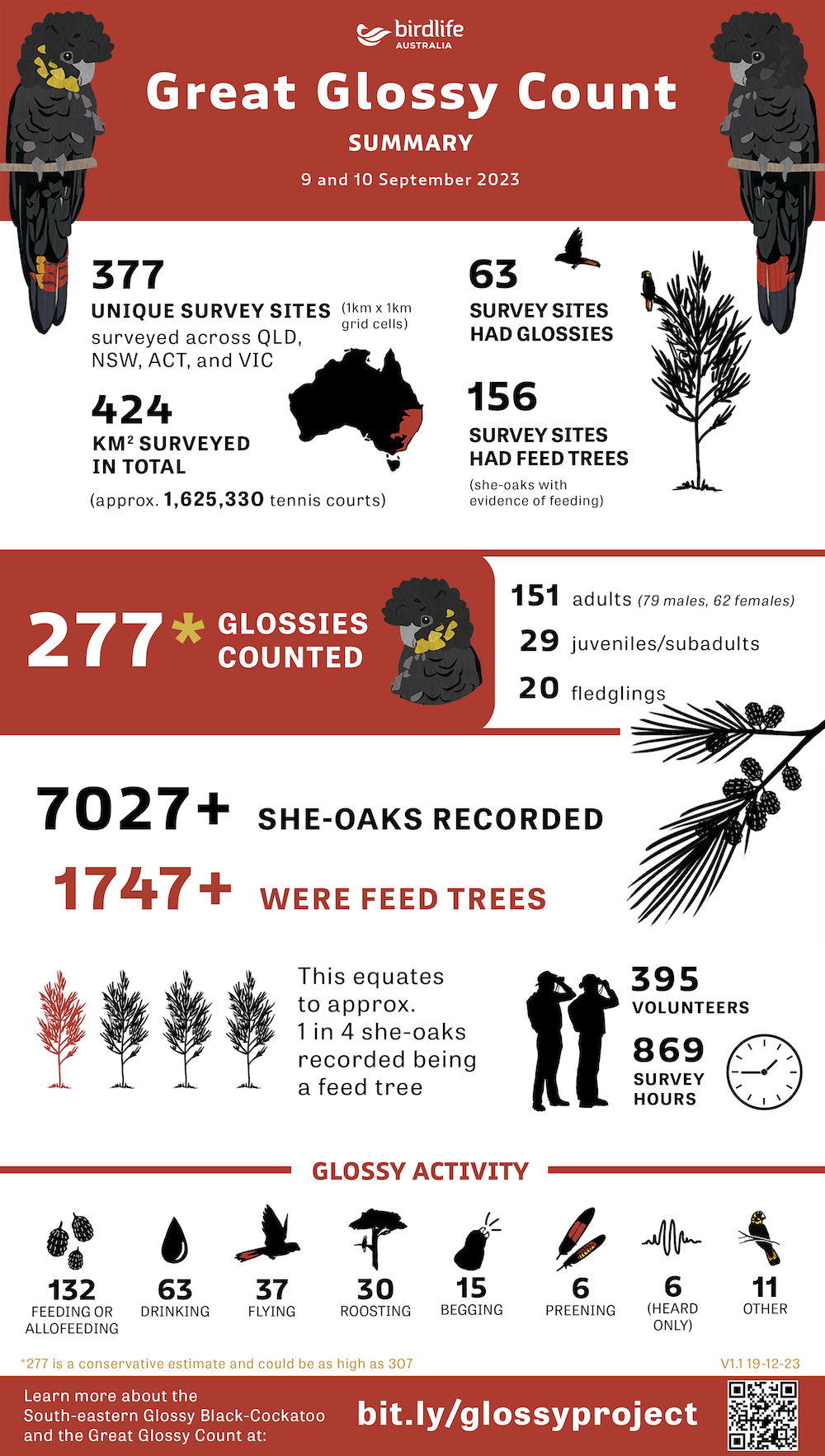
|
|
Jump to:
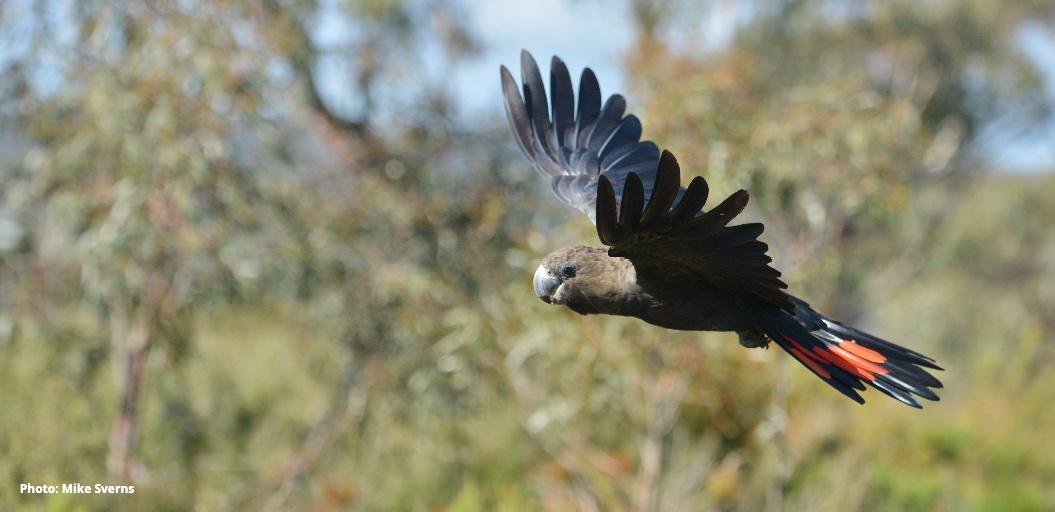
What is the Great Glossy Count?
The Great Glossy Count is a citizen science event that collects data across the distribution of the South-eastern Glossy Black-Cockatoo (also known as ‘Glossies’). Citizen scientists spend one hour (ideally more) at any time during the Count weekend exploring their selected survey site to collect data on Glossies and their feeding habitat. You can join the Count as a group or bring a friend along for a great opportunity to enjoy time in nature while supporting the recovery of threatened birds.
Data collected during the Count will support vital bushfire recovery and conservation work for Glossies by informing actions to manage their habitat.
Where can I take part in the Count?
The Great Glossy Count takes place across south-eastern Queensland, eastern NSW, the ACT and eastern Victoria (see map below).
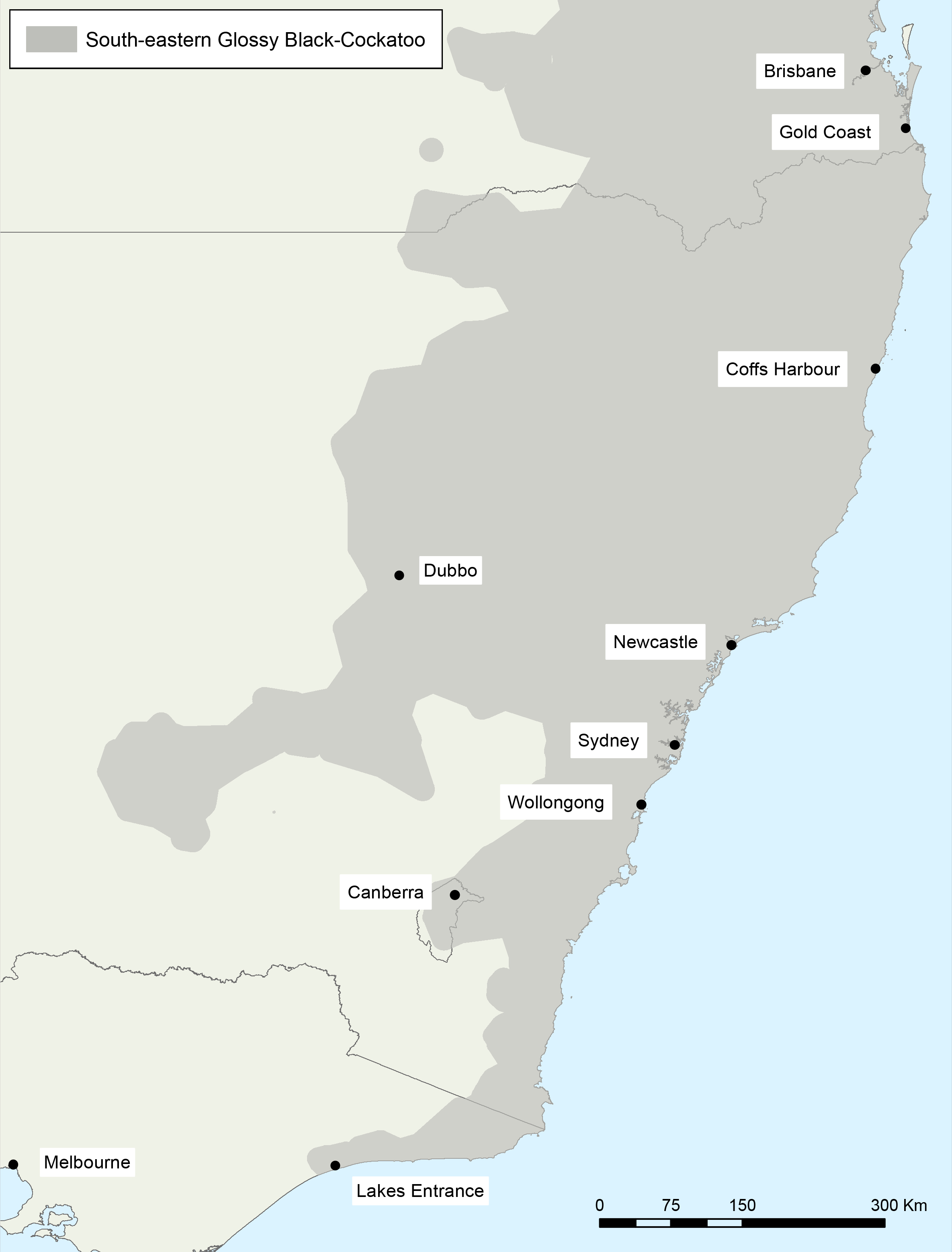
Above: Distribution of the South-eastern Glossy Black-Cockatoo.
Support the recovery of Glossy Black-Cockatoos by joining the Great Glossy Count
The South-eastern Glossy Black-Cockatoo was recently listed as ‘Vulnerable’ under Australian legislation and is at risk of further population decline after losing large areas of feeding habitat in the bushfires of 2019–20.
Glossies feed almost exclusively on seeds found in the cones of she-oak trees (Allocasuarina and Casuarina). These trees must be protected to maintain a food source for populations of Glossies, thereby reducing the impacts of bushfires and other threats.
Data about Glossies and their feeding habitats are vital for planning bushfire recovery and conservation action. Citizen scientists who join the Great Glossy Count collect data to identify Glossy feeding habitats, so it can be protected and restored.
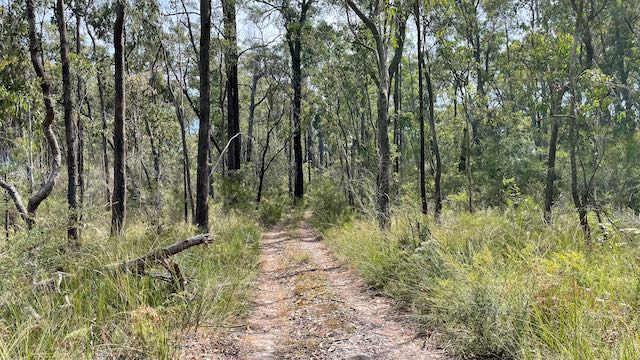
FAQ #1 - about the Great Glossy Count
Anyone who can safely collect data at their selected survey site(s) for one hour (ideally a few) on one or both days of the Count can take part. BirdLife Australia will provide training materials and instructions to teach volunteers how to identify Glossies and she-oak trees, and guidance on how to collect data safely.
We ask volunteers to spend at least one hour (ideally a few) collecting data at their survey site, though you can collect data for as long as you like.
PLEASE NOTE: experts from BirdLife Australia (and other organisations and individuals working to conserve Glossies) have done their best to identify suitable priority survey sites, but cannot guarantee that all priority sites listed are accessible or suitable. Please use your best judgement if surveying a site at a location you have not been to before.
Within the distribution of the South-eastern Glossy Black-Cockatoo, survey sites comprise 1 km2 areas (1km x 1km) which support suitable habitat (that is, typically in forested areas with an abundance of she-oaks), or where Glossies have been recorded previously. Volunteers can choose to collect data at a survey site, or select their own survey site if they are aware of other locations which have evidence of Glossies being present.
You can see how the data recorded in Birdata is used at: https://birdlife.org.au/programs/birdata/
Yes. Data collected outside of 9–10 September 2023 is valuable, but will not be included in the ‘Great Glossy Count’ dataset. You can record Glossy Black-Cockatoos and she-oaks in the Birdata app or on the Birdata website at any time, using the ‘SE Glossy Black-Cockatoo’ program in Birdata.
Yes, we encourage volunteers to take part in the Count with a friend or in a group. The first person to book a particular survey site will receive a booking code that can be shared with others, so that the others can join the booking. All group members must register for the Count and pass the Glossy quiz in Birdata to participate in the Count.
There are five species of black-cockatoo in Australia; one of those is the Glossy Black-Cockatoo. Glossies feed almost exclusively on seeds found in the cones of she-oak trees; if you are in eastern Australia and see a black-cockatoo feeding on anything other than seeds from she-oak cones (e.g., pine cones or banksias), it is likely a Yellow-tailed or Red-tailed Black-Cockatoo (not a Glossy).
Attend one of our training workshops, or review our videos and downloadable pdf resources.
Workshops for the Great Glossy Count 2023 are held by BirdLife Australia and the Glossy Black Conservancy. Click the button below to go to the recording of the virtual workshop, or to view any upcoming workshops.
FAQ #2 - registering for the event and booking a site
To take part, you will need to book a survey site to collect data at after registering. Registrations and survey site bookings will close at midnight on the last day of the Count (Sunday 10 September 2023). This means you can register and book a survey site on the weekend of the Count itself.
Please make sure you are registering via the correct link: bit.ly/glossycount2023. If you are already logged into Birdata, the correct link should take you directly to register and manage your booking.
Yes! Just click the button below.
Glossy resources available at: bit.ly/glossyproject
First, learn how to identify and record data on Glossies using our resources. Second, pass the Glossy quiz and then book your survey site(s) in Birdata.
You can cancel your registration or change/book additional survey sites at any time via https://bit.ly/glossycount2023. You can see which sites are still available to survey right up until the end of the Count. This means you can make changes or book additional sites on the day if you find yourself with some extra time (or need to cancel at the last minute).
You can book up to four survey sites per day. Please contact us at glossybc@birdlife.org.au if you wish to book more than four survey sites.
Absolutely - if the site you wish to survey falls within Glossy Black-Cockatoo distribution (see map above) and there is suitable she-oak habitat, you can book to survey that site.
FAQ #3 - on the day of the Count
Please see our guide below.
We suggest you spend at least one hour (ideally a few) at your survey site. We encourage you to spend as much time as you can exploring your survey site and Glossy habitat; the more comprehensively you can cover your survey site, the better.
Make sure you record your start and finish times in Birdata (or on your printed data collection sheet to enter into Birdata later).
You can collect data at any time after sunrise and before sunset. Some people like to go in the morning and afternoon when the birds are most active, and some collect data at multiple sites. See our guide below.
• Record your data in the Birdata app, or onto a printed data collection sheet so you can enter it into the Birdata website later. • Use the South eastern Glossy Black-Cockatoo Field Guide to help you identify the sex and age of the bird, and the species of feed tree. • Take a photo or video if you can; this may help confirm identification details later. • Please do not purposefully disturb Glossies to get a good photo or identification.
Please record this; the absence of birds and their feed trees are valuable data. You can watch our video guide on how to record your data in Birdata (including 'zero' data), or view our guide on 'How to participate in a Glossy Count'.
If you have a photo or video, you can email this to the Glossy Project team at glossybc@birdlife.org.au.
If possible, take a photo or video of any birds you see. Birdata allows you to upload photos, so the Glossy Project team can help you verify your sighting. Refer to the South-eastern Glossy Black-Cockatoo Field Guide and training videos to do your best to identify the bird. If you are unsure, choose ‘unsure’ or write this in the ‘Comments’ section.
If you have a photo or video, you can email this to the Glossy Project team at glossybc@birdlife.org.au.
Record your observation and make a note in the ‘Comments’ section that you think it might be the same bird you recorded previously, and where you saw it. If possible, take a photo or video of any birds you see. Birdata allows you to upload photos, so the Glossy Project team can help you verify the sighting and whether it is the same bird.
PLEASE NOTE: If you use a data collection sheet on the day, you will need to enter your data into Birdata later (birdata.birdlife.org.au) for it to be included in the Great Glossy Count dataset.
You can use the Birdata app without an internet connection. Data will be uploaded once your internet connection is re-established. If your map doesn’t load properly (e.g., the map shows up as white), don’t panic as the GPS location will still be recorded. You can click your location and check the grid cell name to confirm you are in the correct grid cell. If you cannot use Birdata on your device, you can print data collection sheets available below.
Great Glossy Count infographics
The summary infographics from the Great Glossy Counts held in 2022 and 2023 can be viewed below, along with state summaries for 2023.
Things to note:
There were some differences between the two Counts held and how data was processed (e.g. two days vs one day for 2023 and 2022 respectively), so some numbers are not directly comparable.
In the "Glossies Counted" breakdown, only birds of known age (adults, juveniles/subadults, and fledglings) were included in the infographics. In the "Glossy Activity" breakdown for 2023, there may be more behaviours than Glossies counted due to birds being counted over two days.
All high-resolution versions of the infographics can be accessed and downloaded here.
